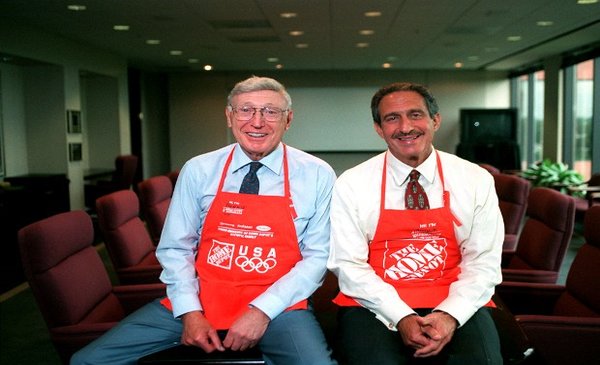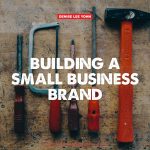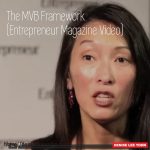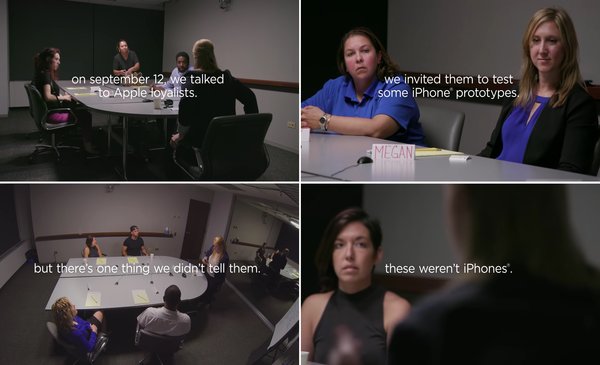As usual, the TED community has lots of news to share this week. Below, some highlights.
Man vs. machine? It took Danit Peleg just 100 hours to print the dress worn by fellow TEDster Amy Purdy in the opening ceremony of the Paralympics in Rio (if that sounds slow, consider that it took her 300 hours to print a dress a year ago). Peleg had never met Purdy before the first fitting, so she used Nettelo, an app that allows users to create a 3D scan of their body, to make sure the dress fit Purdy perfectly. Since Peleg used a soft material called Filaflex to print the dress, it moved beautifully as Purdy, a Paralympic medal-winner who lost both legs to bacterial meningitis at age 19, mesmerized audiences with a bionic samba routine. (Highlighting the fact that Purdy was also a finalist on Dancing With the Stars.) The dress was perfectly in line with Purdy’s dance, a reflection on the human relationship to technology and its ability to allow Paralympic athletes to reach their full potential — one point, Purdy even danced with a robotic arm. (Watch Danit’s TED Talk and Amy’s TED Talk)
For the problems that affect us all, start small. Our national and international political institutions are hopelessly ill equipped to solve the complex, interdependent problems of the 21st century, says Benjamin Barber, but a solution is close at hand — cities, and the mayors who govern them. Barber has long dreamed of building on the urban networks that already exist in specific policy domains to form a global parliament of mayors, and with the inaugural convening of the Global Parliament of Mayors in The Hague, September 9-11, that dream is now a reality. More than 60 mayors agreed on The Hague Global Mayors Call to Action and discussed future governance of the GPM. They also discussed action-oriented plans for such issues as climate change, migration and refugees. (Watch Benjamin’s TED Talk)
Taking the measure of fragile cities. Robert Muggah’s Igarapé Institute is behind a data visualization platform on fragile cities, which launched at Barber’s Global Parliament of Mayors and includes information on more than 2,100 cities with populations of 250,000 or greater. Developed along with United Nations University, World Economic Forum, and 100 Resilient Cities, the cities were graded on 11 variables, including city population growth, unemployment, inequality, pollution, climate risk, homicide, and exposure to terrorism. Surprisingly, the analysis revealed that fragility is more widely distributed than previously thought. (Watch Robert’s TED Talk and read this Ideas piece co-written by Barber and Muggah)

Image permission granted by Robert Muggah.
Biodiversity in The City of Lights. Shubhendu Sharma’s project to promote biodiversity in Paris has been selected as one of 37 projects to improve the city that will be put to a public vote. The vote is part of the city’s Participatory Budget Initiative where residents submit proposals on concrete ways to improve their district or the city at large. The proposals are narrowed down before being voted on by residents (projects for the city at large and projects for specific districts are voted on separately). All residents, not just those who submitted the project, can help bring winning projects to life. Between 2014 and 2020, Paris has dedicated 5% of their capital budget to fund these projects and in 2016, that commitment totals €100-million. By 2020, the investment will total close to half a billion Euros. (Watch Shubhendu’s TED Talk)
The poetry of dissonance. “I don’t remember the last time police / sirens didn’t feel like gasping for air,” writes Clint Smith in his debut poetry collection, Counting Descent, released on September 15. Weaving between personal and political histories, Smith masterfully tells a coming-of-age story exploring the cognitive dissonance that occurs when the community you belong to and the world you live in send you two very different messages. Specifically, he renders the dissonance stemming from straddling a world that frequently depicts blackness as a caricature of fear and communities that ardently celebrate black humanity. (Watch Clint’s TED Talk and read his Ideas post)
Listen up, language lovers. Many of us lament the shifts that occur in language over time, maintaining that language is steadily deteriorating as it succumbs to a steady onslaught of acronyms from our text messaging habits or a misuse of words that grows to be common and accepted over time, like the use of “literally” to mean “figuratively.” But linguist John McWhorter thinks you should think twice before complaining. His new book, Words on the Move, published September 6, explains why the evolution of language is not only natural, but good. (Watch John’s TED Talk and watch for a new talk from John this fall.)
Art that mixes oil and water. Fabian Oefner is on a quest to unite art and science. As he told audiences at TEDGlobal 2013, “On one hand, science is a very rational approach to its surroundings, whereas art on the other hand is usually an emotional approach to its surroundings. I’m trying to bring those two views into one so that my images both speak to the viewer’s heart but also to the viewer’s brain.” His latest work, Oil Spill, is no exception. The photographs show the captivating result of mixing oil and water. The bright colors result from the refraction and reflection of light as it travels through the lens of the camera. (Watch Fabian’s TED Talk)
Do judge a book by its cover. How do you read a closed book? It sounds like a trick question, but Ramesh Raskar and colleagues have developed a camera that can do just that. In order to test the prototype, the researchers used a stack of papers, each sheet with one letter printed on it, and the camera was able to correctly identify the letters on the first 9 sheets. The camera uses a type of electromagnetic radiation called terahertz radiation and could eventually allow academics and researchers to access ancient books and documents too fragile to open. The system could also be applied for analysis of other materials that occur in thin layers, such as the coatings on machine parts or pharmaceuticals. On September 13, Raskar was awarded the Lemelson-MIT prize for his co-invention of many breakthrough imaging solutions including this camera, a camera that can see around corners, and low-cost eye care solutions. (Watch Ramesh’s TED Talk, and read more about the technology behind the camera in this Ideas piece.)
The real meaning of conspiracies. In The New York Times, Zeynep Tufekci explains how the prevalence of conspiracy theories in America’s current election cycle — think Hillary Clinton’s body double or the head of her Secret Service who’s really her hypnotist — is not an anomaly, but a symptom of problems that run much deeper. Conspiracy theories are nothing new, she says, but the growth of technology and declining trust in public institutions means that their number is only growing. “Conspiracy theories are like mosquitoes that thrive in swamps of low-trust societies, weak institutions, secretive elites and technology that allows theories unanchored from truth to spread rapidly. Swatting them one at a time is mostly futile: The real answer is draining the swamps.” (Watch Zeynep’s TED Talk and watch for a new talk from her this fall.)
Have a news item to share? Write us at [email protected] and you may see it included in this weekly round-up.





















